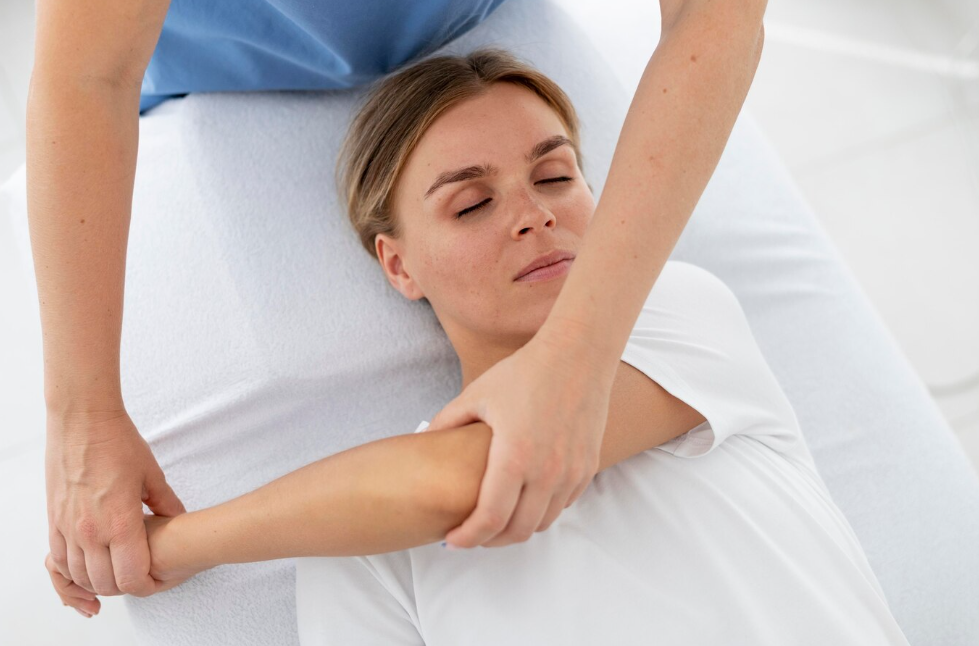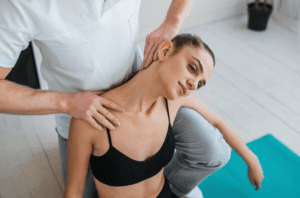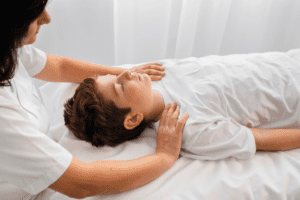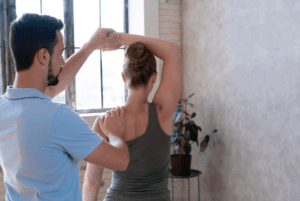Have you ever had a massage that made you feel like your whole body was reset? It was that good. If that’s the case, you could have felt the advantages of an acupressure massage. Acupressure massage has been around for a long time, and it’s a great way to relax, alleviate discomfort, and boost your health.
Acupressure back massage techniques are popular. Those with stress, poor posture, or excessive use often experience back tension and discomfort, which houses numerous key muscles and tendons.
Acupressure massages can relieve back discomfort, increase blood flow, and relax muscles. In addition to relieving pain and tension, acupressure is a wonderful method for calming the mind and body. There are a lot of licensed massage therapists in Vancouver that can provide you with an acupressure massage.
What is Acupressure Therapy?
Acupressure is a massage technique with a long history that uses the application of pressure to certain places on the body to alleviate pain and other symptoms. Meridians, or channels, run the length of each human body, according to TCM. Along these channels flows the life-giving energy force known as Qi.
When applied pressure at certain spots along the meridians, acupressure helps release stagnant Qi and restore normal energy flow. Acupressure is not part of the standard medical practice in Western medicine since the meridians are not believed to exist.
Acupressure massage is a multi-step procedure that addresses ligament, tendon, and muscle pain holistically. Your masseuse will first talk to you about your suffering in an effort to determine which meridians could be obstructed. To assist them in identifying the cause of your discomfort and how it is affecting other areas of your body, the masseuse employs a comprehensive handbook.
Your masseuse concentrates on particular acupressure spots that may be “closed” throughout the massage and employs pressure and deep tissue techniques to try to open them again. To activate and release the qi energy, your masseuse applies pressure with their fingertips on the acupressure point.
To make sure there are no obstructions in the flow of qi, your masseuse checks all the spots along the meridian that are producing your symptoms. To assist in relieving muscle tension, they could also give targeted massages to uncomfortable or painful regions.
History of Acupressure Massage
Acupressure massage is a type of massage treatment that has its roots in traditional Chinese medicine and therapeutic methods. This technique has its origins in an old literature known as The Yellow Emperor’s Inner Cannon, which dates back thousands of years. This book started a long-standing custom of associating “qi” with wellbeing and health.
Numerous translations refer to qi as spirit or life energy. According to TCM, this energy runs through the body and can produce pain or illness if it is obstructed in various places. Qigong, also known as qi practice, is the movement or stimulation of various body parts to improve the flow of qi through the body and promote overall health.
Over the ages, this approach has been improved and changed, with many works fusing spiritual principles derived from Daoism and Buddhism with empirical observation. These techniques are still evolving today, with contributions from some of the most well-known intellectuals in Chinese history, like Zhang Zhongjing.
Since Huangfu Mi released The AB Canon of Acupuncture and Moxibustion, his seminal work on acupressure, in the third century CE, acupressure—as it is known today—has been understood and documented. Since then, in the present day, the study has been improved and expanded upon.
What is Acupressure Used For?
The human body is home to hundreds of acupressure sites that relate to various organs and systems. (Your kidney, for instance, is represented by a dot on your palm.) Exercise has numerous benefits, as expected. Whether you’re a meridian skeptic or not, the soothing benefits of acupressure massage can be enjoyed alongside any other massage.
Research suggests that acupressure can provide relief for headaches, menstrual cramps, back pain, and various aches and pains. Beyond its well-studied uses, the practice has intriguing potential to support the immune and digestive systems. Acupressure can treat several conditions:
- Headaches, backaches, period cramps, and arthritis are just some of the many problems that acupressure may alleviate.
- Acupressure works wonders for all types of nausea, from motion sickness to morning sickness and even chemotherapy-induced nausea.
- Acupressure has the power to relieve stress and anxiety by promoting both mental and physical relaxation.
- Acupressure could be helpful to ease your tension and improve your quality of sleep if you have difficulties falling asleep.
- Acupressure can help with digestive, respiratory, and allergy woes, among other ailments.
What are the Major Acupressure Points?
There are spots on the body called acupressure points where massage therapy works especially well. The concept of bodily meridians is the foundation for these sites. The bodily force, or qi, is said to flow along the channels or paths known as the meridians.
A practitioner of Chinese medicine may diagnose you with several blocked meridians and cure your condition by applying pressure to the relevant acupressure points or by using acupuncture. This method allows the passage of qi and opens your meridians. The body is covered in numerous meridians. When your qi is unobstructed and moves smoothly from place to place, you can experience major health advantages.
Doto and Thuroff list a few of the more notable ones, however there are many more:
1. ST 36: Locate the bony point directly behind your kneecap. Then, extend your leg slightly outward to reveal a little indentation. That’s Stomach 36; it helps with constipation, indigestion, and other symptoms.
2. LI 4: If you have ever massaged the area between your thumb and pointer finger, you were rubbing Large Intestine 4, often known as the “great eliminator.” It’s a widely used acupressure point for migraines and headaches. It is also believed to cause pregnancy-induced labor.
3. GB 21: Gallbladder 21 is a well-known point that is utilized to release tension from excessive stress in the shoulders and neck. It is situated between your neck and the place where your arm and shoulder join on the back of each shoulder.
4. Yin Tang: You were kneading the Yin Tang point if your yoga instructor ever instructed you to massage the “third eye”—the area between your eyebrows. It is stated that applying light pressure to the spot encourages relaxation and stress reduction.
5. PC 6: Pericardium 6 is used to treat motion sickness and nausea brought on by pregnancy. It is situated on the inside of the wrist (motion sickness bracelets press against this spot).
Types of Acupressure Massage Techniques

Let’s look at the different types of Acupressure massage techniques:
1. Tui Na Chinese Massage
An ancient Chinese massage called Tui Na is one of the most popular acupressure therapies. It includes a variety of hand exercises and complete body stretches. Numerous methods, including gliding, kneading, rolling, tugging, and tapping, are comparable to Western massage modalities.
Targeting important muscle groups with the knuckles, palms, fingers, and thumbs stimulates the acupoints. It is thought that this therapy works better for treating extremely particular issues.
2. Shiatsu Massage
Shiatsu is a traditional Japanese therapeutic technique that applies pressure to meridian points using the hands, arms, legs, and even the feet. Certain versions do employ different methods of healing.
Additionally, it uses a variety of dance-like motions to stretch the body and exert strong, focused pressure on the meridian points. Like other types of acupressure, the patient’s rationale for selecting the therapy will determine the motions, pressure used, and meridian sites.
3. Su-jok Massage
Su-Jok, a South Korean technique, is regarded as one of the most basic acupressure treatments. The translation of “Su Jok” is “hand feet.” It’s a kind of healing where the focus is on pressing certain body parts’ acupoints. The meridian points on the hands and feet correlate to various organs in the body, which is why it concentrates on them.
By opening up the qi energy channels, massaging these meridians promotes quick recovery. Su-Jok is believed to offer immediate alleviation. It is said to be especially beneficial for issues connected to stress and chronic pain.
4. Trigger Point Therapy
Trigger pointing relieves tense muscles and reduces discomfort. Trigger point therapy is a useful method for treating muscle knots and sensitive spots. A trigger point is a particular location inside a muscle that has the potential to transfer pain to another area of the body. For instance, a trigger point in your neck may direct pain to your shoulder or back, while a trigger point in your shoulder may produce migraines.
You may discover the trigger point and apply light pressure to release a latent trigger point on your own, or you can visit a professional to release your trigger points. Soft tissue massage and dry needling combine nicely with trigger point treatment.
Also read: Uncovering the Benefits of Trigger Point Massage for Your Muscles
Acupressure Massage Techniques
Use your finger or thumb to gently but firmly press into the acupoints, then use an upward or downward circular motion to massage them.
Keep in mind the phrase “gentle but firm.” In contrast to “painful pain,” the pressure should be just hard enough to provide what I refer to as “comfortable pain” without leaving a mark, comparable to what you would experience when painful regions and tense muscles begin to relax during a massage.
To activate each point, massage it for at least 30 seconds. However, don’t overdo it; three minutes is normally the maximum amount of time that should be spent on each point in a single session.
You may also count from 10 to 20 deep breaths at every point if you’d like not to look at the time. This will not only help you stay focused and calm throughout the massage but also help you stay relaxed!
A different approach is to count how many times you massage in circles or up and down motions; the amount will vary depending on your pace, from 20 to 50 per point. Try several approaches to determine which one works best for you.
Rather than pressing from the tip of the thumb or finger pad, make sure to press from the middle to prevent digging in your nail and leaving a mark.
Some individuals choose to use a device known as a “acupressure pen,” which may be anything from a basic metal instrument with a round tip to a sophisticated technological device. A pencil with a rubber (eraser) end is another really useful substitute that you may certainly find on your desk. Just press the rubber end to stimulate the points!
Try out different pressure points over the first few sessions to see what kind of impact you receive. Once you’ve determined which points work best for you, you may concentrate just on them.
Since most meridians run symmetrically on both sides of the body, the majority of the points are really pairs of points. Certain pairs of points, such as those on either side of the neck or back that is easily accessible with both thumbs, can be massaged simultaneously. Others can be massaged left, then right, or the other way around.
Why is Acupressure Massage Beneficial?
The benefit of an acupressure massage is that it addresses your issue holistically. This traditional massage approach looks for underlying reasons for pain and how the body’s interrelated systems may help you address and heal it, rather than just focusing on the uncomfortable areas.
Your problems could only show up in one or a few places, but they could have additional stressed or misaligned body components at their root. Your practitioner can identify underlying causes of discomfort and treat them in addition to treating the obvious causes of pain by studying your body’s meridians.
Furthermore, acupressure massage therapy treats your body holistically rather than as a collection of disparate systems. Achieving holistic wellness necessitates treating the complete body in order to comprehend the flow of qi through your body.
Your massage therapist uses acupressure to enhance your well-being, making you feel better both physically and emotionally. A holistic approach to well-being and pain management is offered by this innovative treatment method.
Is Acupressure Massage Right for Me?
What an acupressure massage and if it’s a good alternative for therapy are questions that a lot of people have. Acupressure massage is a therapeutic method that may treat many forms of pain and discomfort and has numerous advantages.
By investigating the underlying causes of your pain and considering the interrelated systems that may be causing you distress, this age-old holistic treatment method can help relieve your pain.
Spa Utopia provides a variety of acupressure massage techniques, such as a custom meridian massage that addresses qi blockages and targets the entire body rather than just specific muscles. Make an online reservation to schedule your acupressure massage right now.
Also read: Massage Therapists- Myths VS Facts
Final Thoughts
Acupressure is a popular CAM since it’s easy to use. No special equipment is needed, and everyone may use it. It is safe, beneficial, and unlikely to harm the body. Most individuals feel protected and relieved after acupressure massage. If you are pregnant, sick, or on medication, consult your doctor before getting an acupressure massage.
Acupressure massage works by applying pressure to certain body points to relieve pain, relax, and enhance health. Spa Utopia, Vancouver Spa, has several acupressure massage therapists who can give safe and effective service. Book an acupressure massage now to experience its revitalizing benefits. Schedule an acupressure massage now to feel the rejuvenating effects of this time-honored practice.
FAQs
1. What is an acupressure massage?
Traditional Chinese medicine, or TCM, employs acupressure massage, which applies pressure to particular body locations to reduce pain, induce relaxation, and enhance general health. Its foundation is the notion that qi, or energy, flows via channels all over the body. Acupressure practitioners think they may clear blockages in the flow of qi and bring the body back into balance by applying pressure to particular places on these routes.
2. What is the process of an acupressure massage?
Endorphins are the body’s natural analgesics, and acupressure is supposed to function by encouraging the release of these chemicals. Additionally, it could aid in lowering inflammation and enhancing circulation.
3. Which acupressure points are useful for treating back pain?
Although the body has numerous acupressure sites, the following are some of the most often used locations for back pain:
- LI4 (Hegu) is situated in the space between the index and thumb fingers.
- The GB21 (Jianyu) point is situated on top of the shoulder, barely above the collarbone.
- The Zusanli point, or ST36, is situated on the leg, immediately below the kneecap.
4. What can I expect during an acupressure massage session?
Usually, an acupressure massage session lasts between thirty and sixty minutes. The acupressure practitioner will inquire about your symptoms and medical history throughout the session. They will then push on particular spots on your body with their fingers or other instruments. The pressure ought to be intense but not excruciating. Wherever pressure is being applied, you can experience tingling or pain.
5. How can I find an acupressure massage in Vancouver?
In Vancouver, there are a lot of acupressure massage therapists. You might go online or ask your doctor for a recommendation to find a therapist. Make careful to look into the training and experience of the therapist you are considering. Additionally, confirm if the therapist belongs to a professional association like Spa Utopia.





